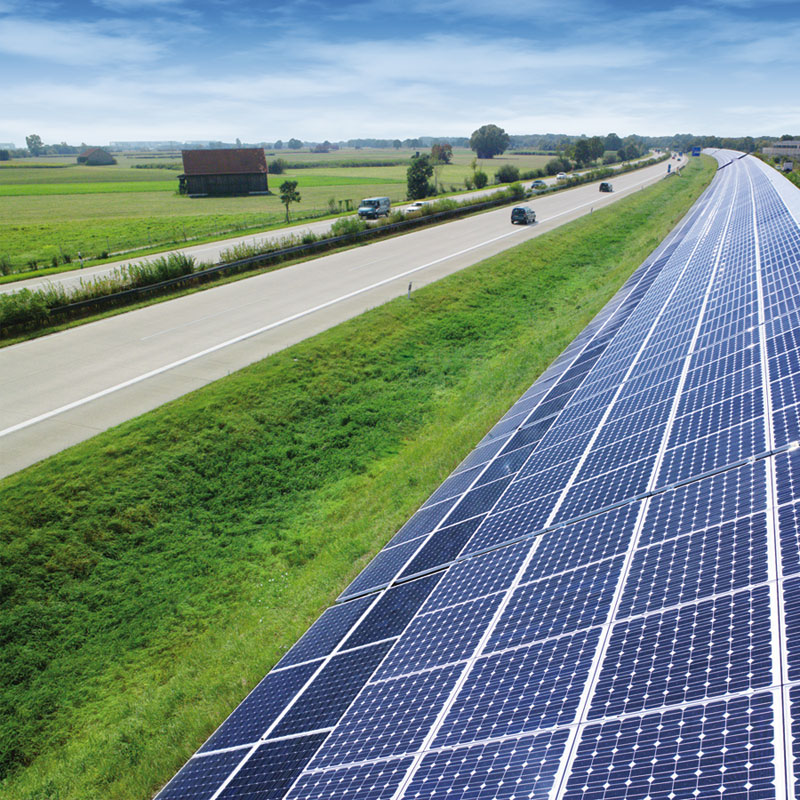Letter: They Paved Paradise And Put Up Solar?

Photo: Wikimedia Commons
I attended the long session on Massachusetts Solar on September 6. Here are some of my questions and thoughts that were provoked and inspired by that session.
Why are we allowing any solar project on anything but paved and otherwise “built” areas? With a strong public policy to cover publicly-owned paved areas and rooftops, and a reasonable incentive program for the same to be on privately-owned paved/built area, we’d be able to meet all our present – and future! – electrical energy needs.
A few facts and related calculations:
Massachusetts has nearly 80,000 lane-miles of paved public roadways, which works out to about 50,000 hectares (125,000 acres) of publicly-owned roadway pavement. The area covered by other publicly-owned pavement (parking lots, transit ways,…) and the privately-owned pavement (mall parking lots, driveways,…) is similar. But let’s be conservative and estimate the total solar-accessible paved areas in Massachusetts total about 100,000 hectares.
On the other hand Massachusetts currently has a roughly 20GW electric power demand (that’s about 3KW per person), so let’s take that as an initial target for converting to solar PhotoVoltaic (PV) sources. How big an area of solar arrays is needed to accomplish this?
More back-of-the-envelope calculations:
Each hectare of solar array at our latitude has a peak electrical power rating of between 1 and 2 MW (megawatts), so between 10,000 and 20,000 hectares would suffice. That’s less than half the publicly- owned paved areas, and much less than 1/5 of the totalsolar-accessible paved areas!
Late in the presentation one of the panelists showed a slide suggesting that there is at least 50GW solar-potential future “A-rated” capacity on privately-owned rooftops, plus an additional large fraction of that
future “A-rated” capacity over paved areas using (more expensive, of course) solar canopies. But this slide seemed to ignore the publicly-owned paved areas.
So we are confronted with these basic questions:
Given that these potential future “A-rated” capacities exceed projected electrical energy demand, why are we encouraging solar development on natural and working lands, just because it seems
“cheaper” in the short-run to install?
In fact, why are we even permitting the destruction or “compromise” of natural and working lands for solar projects, especially when the consequence is not only less carbon sequestration in those natural and working lands, but also depleting if not destroying altogether the environmental services that natural and working lands provide all of us?
And why is the public subsidizing this environmentally questionable land use in the case of land on which conservation or APR easements have been acquired by the public, or on land with MGL Chapter 61 (forest) or 61A (agricultural) tax reductions which the public continues to pay for through the annual tax reductions?
Rob Kusner
Rob Kusner is Professor of Mathematics at UMass Amherst and is a former member of the Amherst Select Board.

UMass’s efforts at covering its parking lots has years ago suggested to me the notion that covering already paved and roofed areas are an effective way of generating electricity without corrupting land untouched by machine or building. It appalls me that somebody put solar arrays right next to the over-paved and usually empty parking lot surrounding the Hampshire mall and on open land at Hampshire college instead of over its parking lots. Preserving unspoiled green spaces is compulsory as the climate changes and population increases. I appreciate your letter, Rob, as you have with data verified my intuition. I aver that not one tree or blade of grass should be cut down for solar until every usable square inch of already paved or roofed land has a solar array over it.
Here, common sense and facts smash into sacred (to some) profit motives.
One can also calculate the reduced cost of snow plowing and fewer accidents due to driving rain and buildup of snow. However, care would need to be taken to maintain some visibility and scenic views for the drivers and passengers, and in future years, for only the passengers.
Interesting point about caring for scenic views, Nina — agreed!
As you may know, the Union Pacific Railroad’s cut through the Sierra Nevada of Northern California makes extensive use of snow-sheds to prevent avalanches blocking the tracks (same for some Alpine railroad lines). These may occasionally compromise the views from the once-a-day-each-way AMTRAK train, but what can be seen from the train at nearby spots is often a spectacular view that’s impossible to see any other way.
The idea, of course, would be to deploy over-roadway or over-parking-lot canopies in just a fraction of the locations that might be suitable based on solar-access alone, avoiding places that are of particular aesthetic value or where maintenance would be especially challenging. Indeed, in the long run, wind energy — especially off-shore wind in coastal states like Massachusetts — will likely comprise a much larger portion of renewable electric-energy generation, so the need to build out photovoltaic solar alone to meet peak electrical demand is unreasonable.
High quality canopies are more expensive to install up front, and additional embodied carbon may result due to their structural steel, etc. But if they last a century (or more) and are mostly reusable, then eventually they may have a lower overall carbon footprint than the cheaper ground-mounted agro- and silva-solar projects. So perhaps it’s those high initial costs, combined with the tax-incentives that may be driving the installation of ground-mounted solar in many “head-scratching” locations…?)